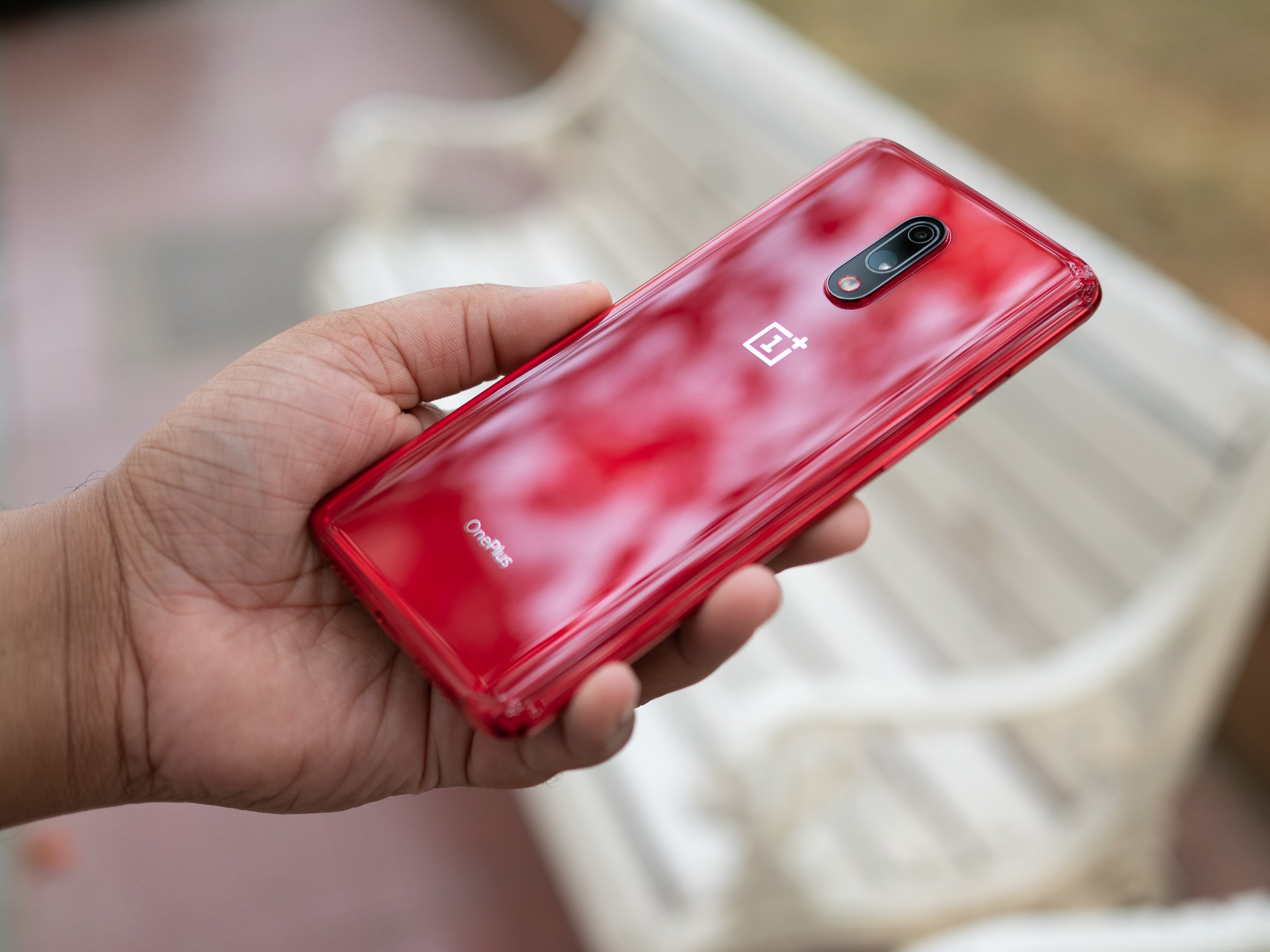The OnePlus 7 is an interesting device. OnePlus is essentially reusing the same design as last year's OnePlus 6T and upgrading the internal hardware for 2019. It's a clever move by the company: the likes of POCO F1 and ASUS ZenFone 5z have challenged OnePlus' dominance in the value flagship space last year, and with the company aiming higher with the OnePlus 7 Pro, it needed a device that can take on Xiaomi, ASUS, and Honor.
That's where the OnePlus 7 slots in. It doesn't matter that the device is using the same design and most of the same internal components as the 6T, because it delivers the upgrades that users actually care about. There's a Snapdragon 855 under the hood, and it has the same 48MP Sony IMX 586 camera sensor as most devices in this category.
To that effect, I'm not going to focus on what you miss out from the OnePlus 7 Pro, but what you gain with the new additions. Here's why you should care about the OnePlus 7.
The Good
- Snapdragon 855 chipset
- Stereo sound
- Excellent battery life
- Clean software with OxygenOS
The Bad
- Camera doesn't hold up in low-light
- No water resistance
- No 3.5mm jack
- No wireless charging
OnePlus 7 Hardware
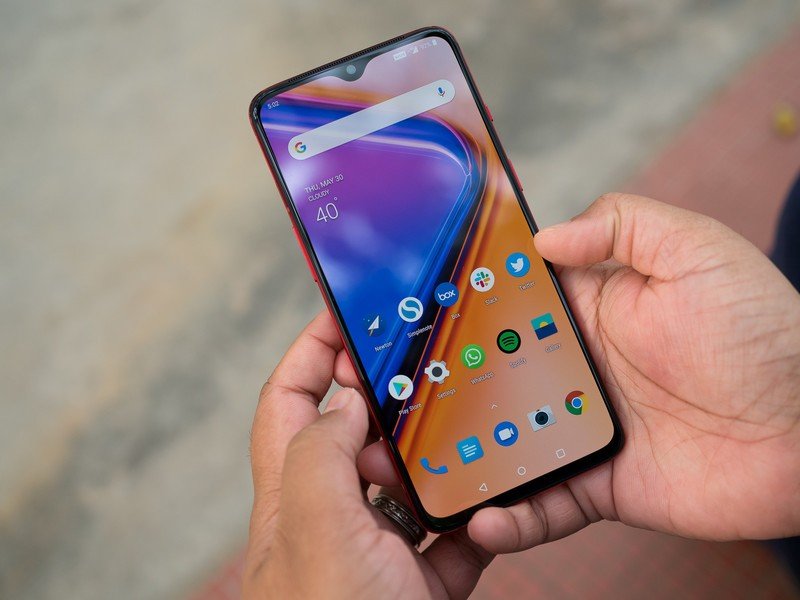
I'm not going to focus a lot on the design side of things with the OnePlus 7, because the phone has the same chassis as the OnePlus 6T. It has the same curves at the back, the same glossy finish that makes it prone to smudges, and the same great in-hand feel. If anything, I prefer this design to the OnePlus 7 Pro as it's not as unwieldy.
The glass back is protected by a layer of Gorilla Glass 5, but you're still better off buying a case to protect the device. The OnePlus 7 is available in a Mirror Gray color option in most markets around the world, but there's a gorgeous red option in China and India. The red variant makes the phone stand out, but seeing as how you'll need to use a case with the device, you can get the same effect by picking up OnePlus' red silicone case.
The OnePlus 7 has the same design and display as the 6T, but that's not a bad thing.
On the subject of change (or lack thereof), the OnePlus 7 uses the same 6.41-inch Optic AMOLED panel as its predecessor. That's not necessarily a bad thing, as the display is still one of the best in this category. You get vibrant colors and excellent saturation, and I didn't face any problems with sunlight legibility.
There's also the same waterdrop cutout at the top of the display, but it isn't as distracting. The one key change on the design side of things is the wider slit at the top of the screen, which now houses the secondary speaker. Stereo sound makes a huge difference, and the phone gets sufficiently loud without losing any of the detail. The addition of stereo sound is particularly great for gaming, and the HDR10 support makes the OnePlus 7 a great device for consuming media on the go.
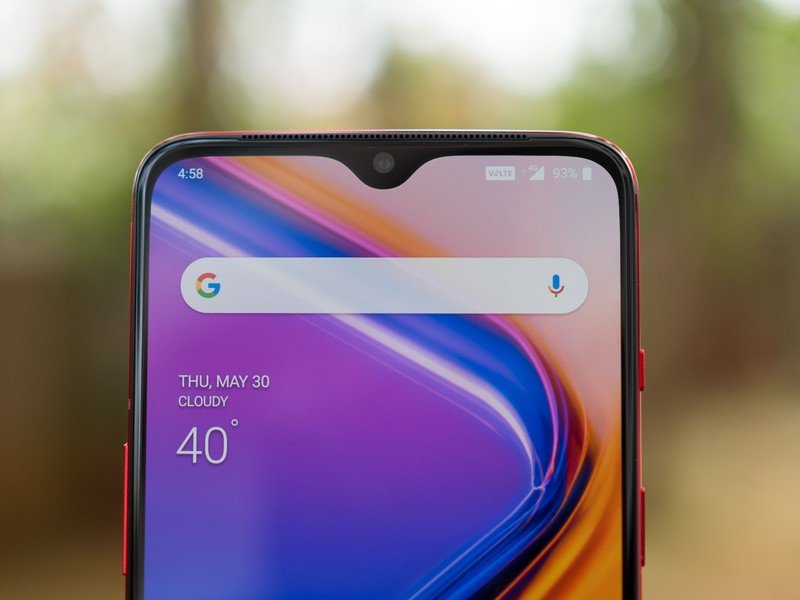
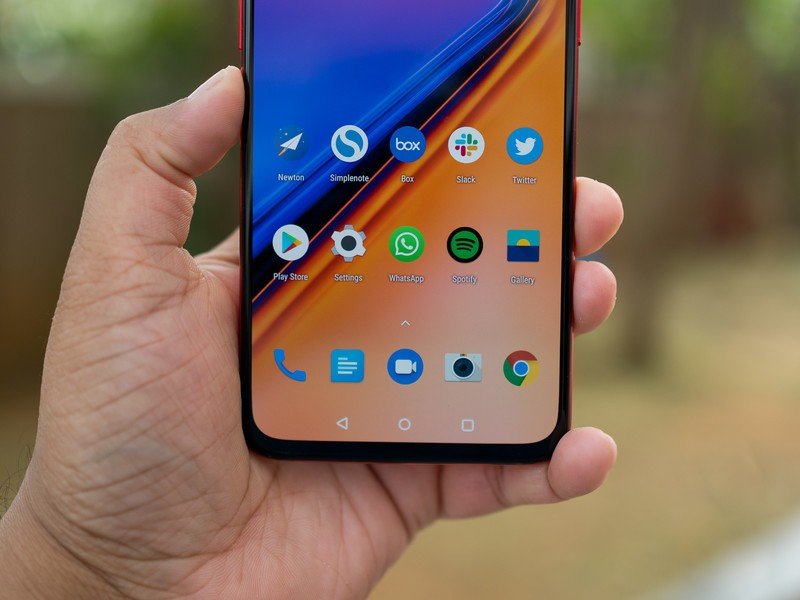
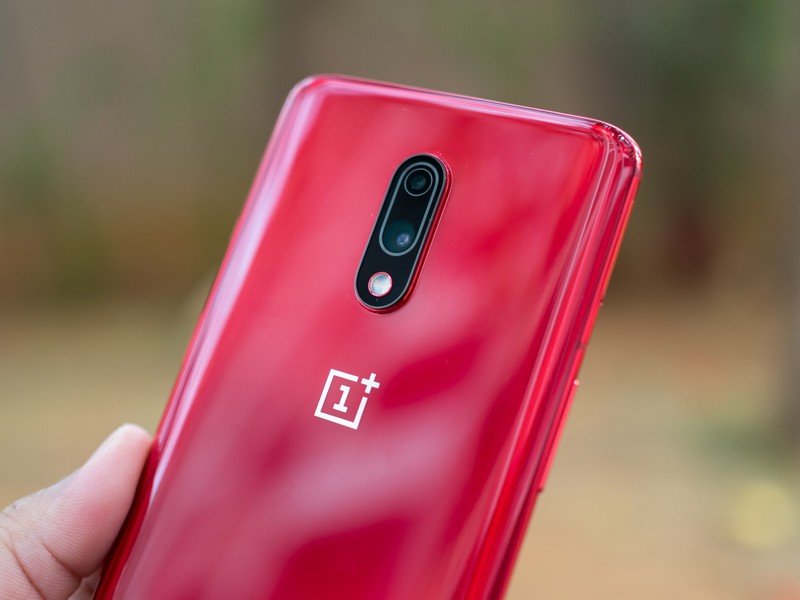
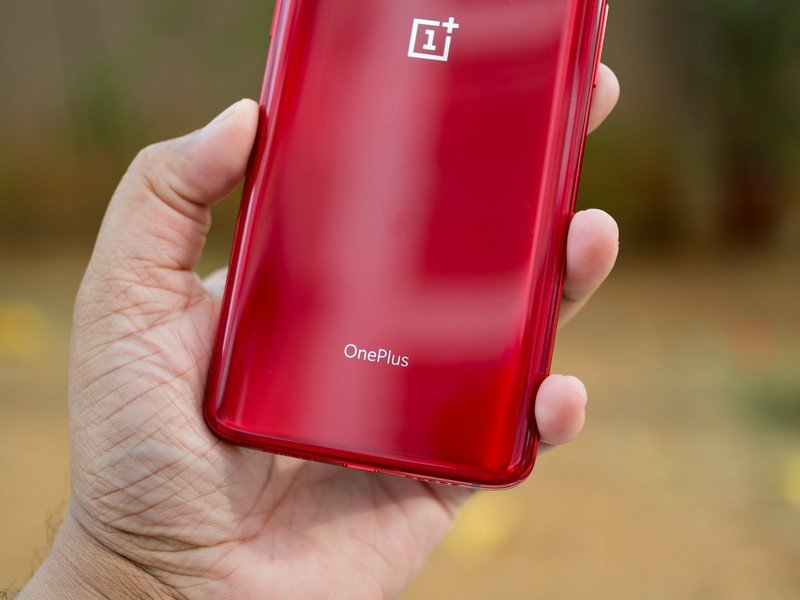
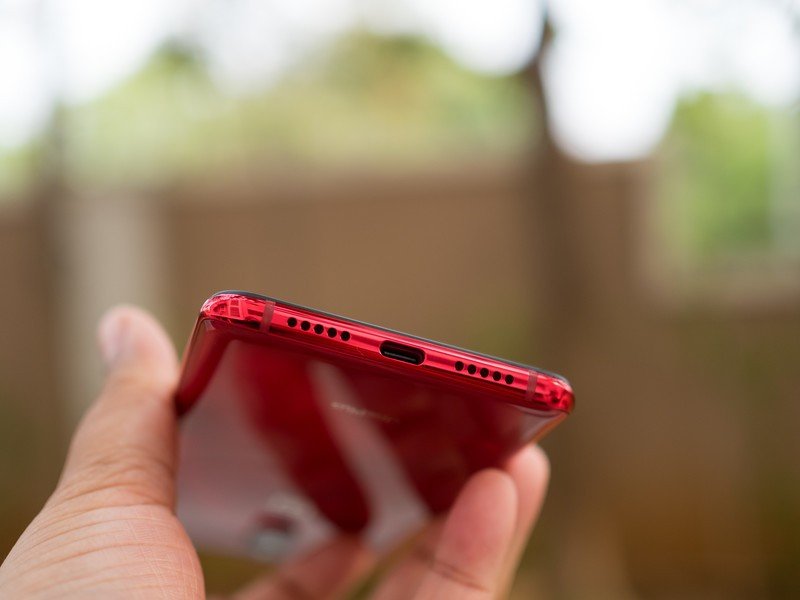
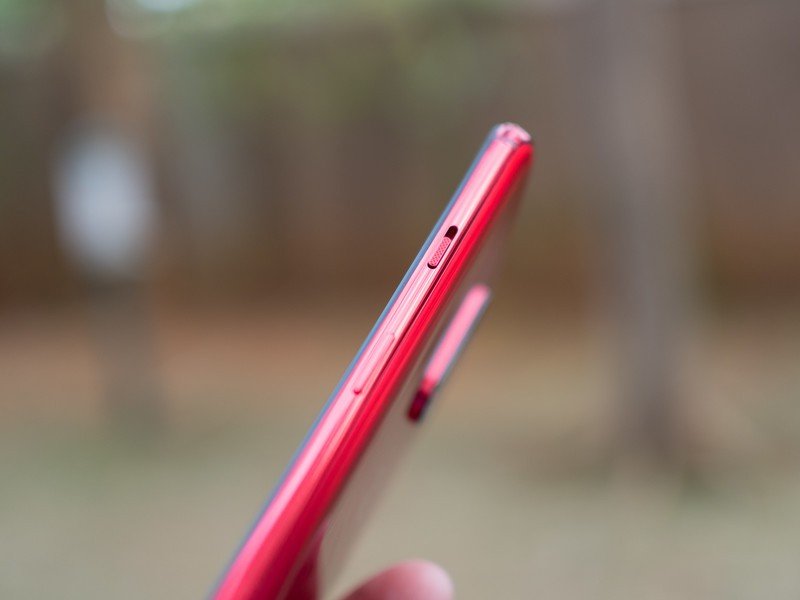
Another major addition on the OnePlus 7 is the Snapdragon 855 chipset. Qualcomm's 7nm platform delivers sizable improvements from last year, and the result is that the OnePlus 7 absolutely blazes through everyday tasks. I never saw a slowdown or lag in the two weeks I used the phone, and right now this is one of the fastest phones in the market.
Like its predecessors, the OnePlus 7 is one of the fastest phones in the market today.
Like the OnePlus 7 Pro, the standard OnePlus 7 comes with UFS 3.0 storage. UFS 3.0 delivers much better bandwidth, but this is more about OnePlus getting to say that it was first to do so. You're not going to notice any difference between a UFS 2.1 module and UFS 3.0 — no matter how hard you're pushing the phone. The base variant still comes with 6GB of RAM and 128GB of storage, and there's also an 8GB/256GB model.
The OnePlus 7 retains the same in-display optical fingerprint module as the 6T, but because of optimizations on the software front, it fared much better in day-to-day usage. It's still not quite as fast as capacitive sensors, but it is faster and more reliable than most phones with the same optical module.
OnePlus is also using the same haptic engine as the 6T, which is a real shame because the one on the OnePlus 7 Pro is significantly better. You also lose out on 30W wired charging, with the OnePlus 7 featuring the same 20W charging as the 6T. It even has the same Dash Charge branding, so that should give you an indication as to how similar the device is to the 6T.
As for battery life itself, I got a day's worth of use consistently from the 3700mAh battery. I routinely saw over six hours of screen-on-time, and there was never an instance where the battery level fell below 10% before the end of the day.
Now onto the things that you don't get on the OnePlus 7: there's no water resistance or wireless charging, and no 3.5mm jack. OnePlus is positioning the device in the value flagship space, and most devices in this category don't have an IP rating either.
OnePlus 7 Software
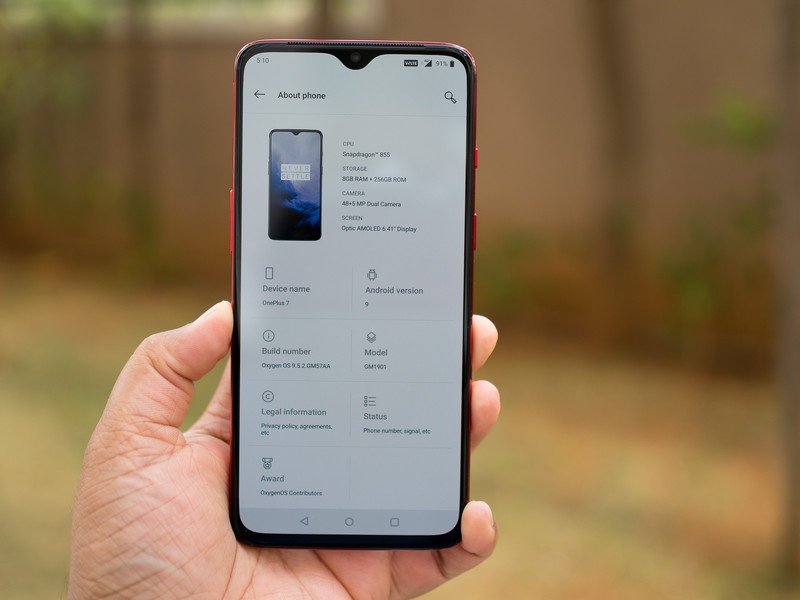
There's little to talk about when it comes to the software side of things. OxygenOS continues to be the best implementation from a third-party manufacturer, and you get a load of useful features combined with an interface that's devoid of any overt customization. That leads to a user experience that's immensely satisfying, and OxygenOS is just about as fluid as things get on Android. You're not going to see any lag anywhere, and OnePlus has done a magnificent job optimizing the software for the hardware.
OxygenOS is still the best third-party skin on Android, and you get all the new features from the OnePlus 7 Pro.
OnePlus is also rolling out all the new features that debuted on the OnePlus 7 Pro over to the standard model. That includes Zen Mode, which lets you unplug by cutting off access to your phone for 20 minutes. When the mode is engaged, all you'll be able to do is take photos with the camera and make emergency calls. The feature is designed to tackle phone addiction, and it does a good job addressing that.
Another useful addition is a native screen recorder that lets you record your own audio as well as video. There's also a new screenshot editor, and OnePlus has turned things up on the gaming front with a new Fnatic mode. It's like gaming mode, but with more aggressive background activity management to give you the best performance while gaming.
Here are all the new features in OxygenOS 9.5
OnePlus is also rolling out a slate of India-exclusive features in OxygenOS. The features will be going live in the coming weeks, but customers in the country will get a new SMS app with spam filtering, and a new dialer that does the same for calls. There's also a new Work-Life Balance feature that lets you manage your work and home profiles better.
For now, what you need to know is that the OnePlus 7 delivers the same great software experience that has made the company stand out in this category over the last two years, with a little extra for Indian customers.
OnePlus 7 Camera
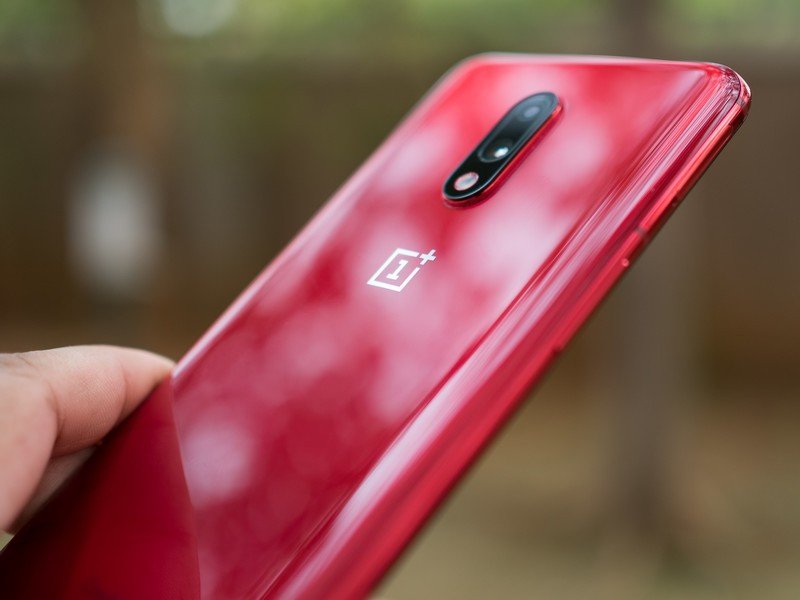
The main highlight of the OnePlus 7 is the 48MP primary camera at the back — the same as the OnePlus 7 Pro. The Sony IMX 586 has been a mainstay on several phones in this category in 2019, and it is one of the best imaging modules around.
The OnePlus 7 uses pixel binning to produce 12MP shots from the sensor, and there's also a 5MP secondary sensor for portrait shots. You're missing out on the wide-angle and telephotos modules from the OnePlus 7 Pro, but it's not a huge omission.







Camera quality on the OnePlus 7 is a mixed bag. You do get a few decent shots now and again — particularly in daylight conditions — but it is inconsistent. The issues are highlighted even more in low-light scenarios, with colors coming out muddy and lot of noise showing up in shots — the phone is particularly bad at taking shots of reds. That said, the Sony IMX 586 sensor itself isn't at fault here; as we've seen on the likes of the Mi 9, it can take excellent photos in any lighting conditions.
The problem is with the camera tuning, and OnePlus has lagged behind in this area for some time now. That said, the company is working to address these issues following feedback from the community, and OxygenOS 9.5.5 does make things better.
Overall though, it is an improvement from the 6T, and that's what matters at the end of the day.
OnePlus 7 Should you buy it?
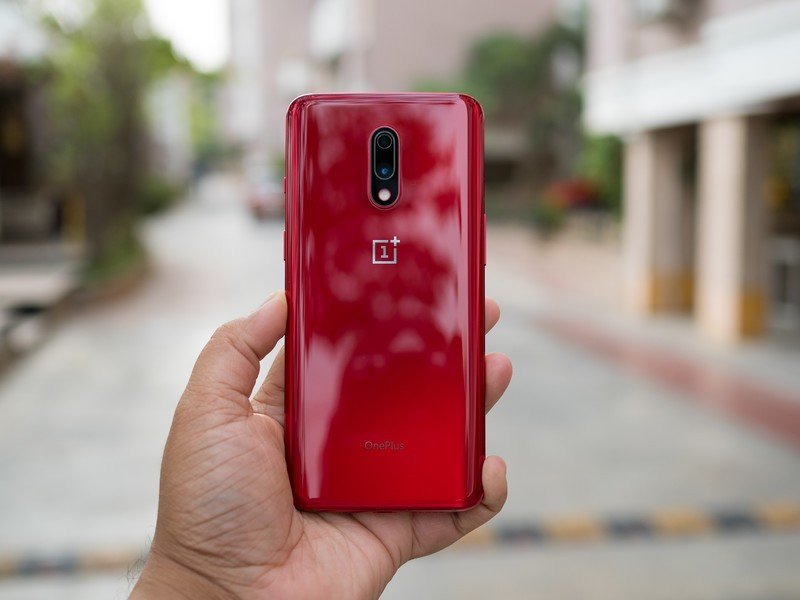
If you already have the OnePlus 6 or 6T, it makes little sense to get the OnePlus 7. The device is aimed at users that are using the OnePlus 5/5T or older, or making the switch from another manufacturer.
With the OnePlus 7, you're getting a device that offers great value. The internal hardware is the latest you'll find, and the display is still going strong in 2019. The battery life is much better than what you get on the beefier OnePlus 7 Pro, and thankfully the software experience is unchanged. The camera needs some fine-tuning, but the sensor itself is one of the best around.
OnePlus saves on manufacturing costs by reusing the 6T design, and those savings are passed onto customers.
By retaining the same design and a lot of the internal components as the 6T, OnePlus is able to save on manufacturing costs, and it is passing some of those savings down to customers in a few markets. The phone itself isn't going on sale in all regions where OnePlus sells devices — it isn't coming to the U.S. OnePlus is targeting India as the main market for the device, and that makes sense because over 40% of the brand's global sales come from India. It needs a strong value flagship to take on Xiaomi and other Chinese brands in the country, and the OnePlus 7 manages to do just that.
4 out of 5
That said, the OnePlus 7 doesn't have the same value proposition in all global markets. In the UK, for instance, there's a £150 ($190) difference between the OnePlus 7 and the beefier OnePlus 7 Pro, whereas in India, there's a ₹16,000 ($250) difference between the two models.
The OnePlus 7 Pro has a stunning 90Hz display, a notchless design, and 30W wired charging. The device also has a wide-angle lens and telephoto shooter, but they don't really offer a tangible benefit. It's up to you to decide if those features are worth $200.
If you're in India, the OnePlus 7 is an obvious choice. OnePlus continues to be very aggressive in the country, and the sheer combination of features on offer combined with the fluidity of OxygenOS make it the phone to beat in the affordable flagship space. You still get to save around $200 in other markets, and if you're not interested in the 90Hz display, the OnePlus 7 is a smart purchase.
At the end of the day, the OnePlus 7 delivers on the same promises as earlier OnePlus devices. The internal hardware has been upgraded for 2019, and the 48MP camera at the back holds a lot of promise — provided it receives further updates. The battery life is excellent, the software is about the best you'll find on Android, and like previous years, you're getting great value. You can't ask for much more.
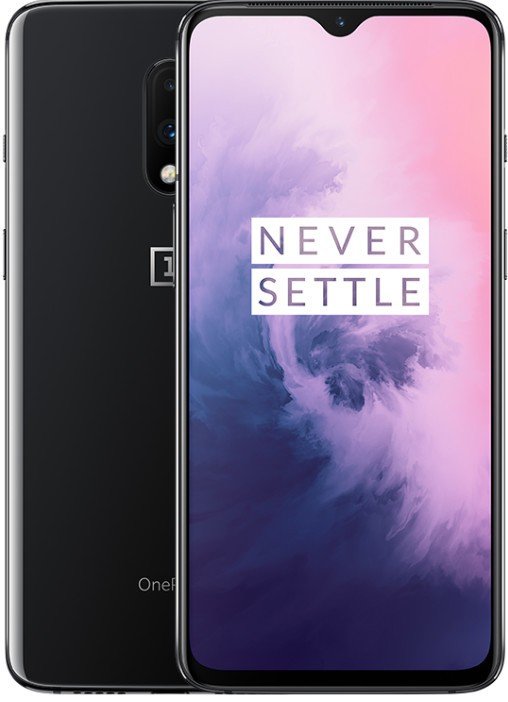
Familiar design, great new hardware.
The OnePlus 7 has three key upgrades that allow it to stand out in the value flagship space in 2019: the Snapdragon 855 chipset, stereo speakers, and 48MP Sony IMX 586 camera. The software experience continues to be great, and the battery life is excellent. If you're not keen on the 90Hz display on the OnePlus 7 Pro, the OnePlus 7 is a great way to save a couple of hundred dollars.

Harish Jonnalagadda is Android Central's Senior Editor overseeing mobile coverage. In his current role, he leads the site's coverage of Chinese phone brands, networking products, and AV gear. He has been testing phones for over a decade, and has extensive experience in mobile hardware and the global semiconductor industry. Contact him on Twitter at @chunkynerd.
